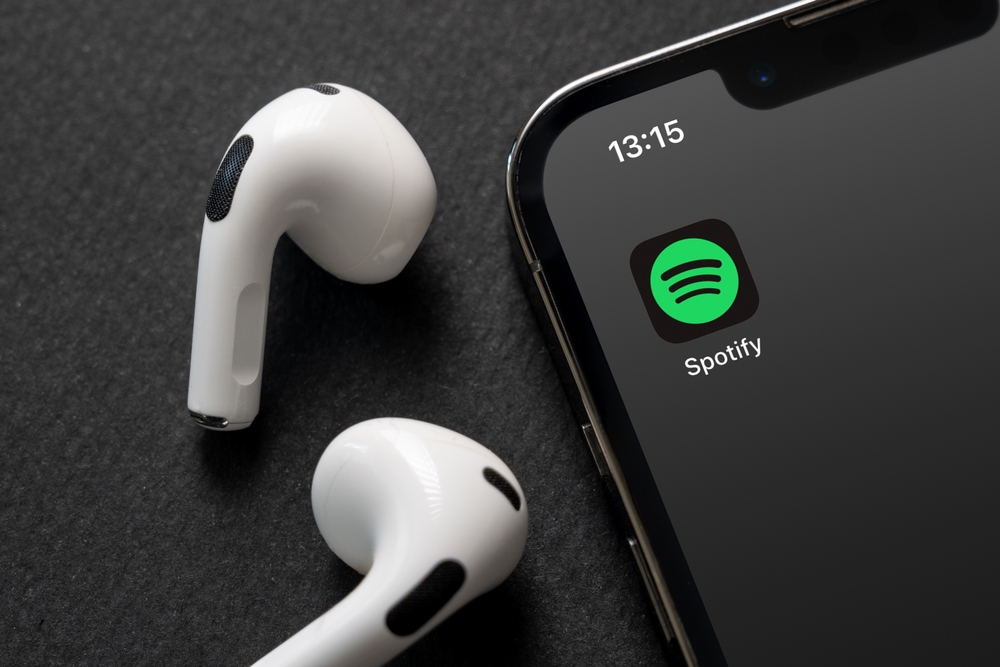Spotify experienced significant service disruptions on Tuesday, May 27, affecting thousands of users who reported difficulties accessing the popular music streaming platform. The widespread outage began around 7:30 AM and generated substantial user complaints across social media platforms as people encountered problems with their daily music streaming routines.
The disruption highlighted the extent to which streaming services have become integrated into daily life, with users expressing frustration about losing access to their preferred entertainment and background music. The incident demonstrates how digital service interruptions can affect millions of people simultaneously across different geographic regions and device types.
Outage reports surge during morning hours
User reports on Downdetector began spiking at approximately 7:30 AM, with more than 16,000 individuals documenting problems accessing Spotify content and features. The timing coincided with morning commute hours when many users typically rely on streaming services for entertainment during travel or work preparation routines.
The volume of reports indicated a widespread service disruption rather than isolated connectivity issues affecting individual users or specific geographic regions. The concentration of reports within a short timeframe suggested systematic problems with Spotify’s infrastructure or content delivery systems.
Downdetector’s tracking system provided real-time documentation of the outage scope, enabling users to confirm that their individual access problems reflected broader service issues rather than local internet connectivity or device-specific malfunctions.
Social media becomes primary communication channel
Users quickly turned to social media platforms to express frustration and seek information about the service disruption, creating impromptu communities of affected individuals sharing similar experiences. The immediate social media response reflected how people use these platforms to validate their technology problems and connect with others experiencing similar issues.
The collective social media response demonstrated the emotional attachment many users have developed to streaming services that provide soundtrack accompaniment for daily activities. Comments revealed how music streaming has become essential infrastructure for many people’s routines and emotional regulation.
Social media platforms served as unofficial customer service channels where users could express frustration while seeking confirmation that service problems affected others. This peer-to-peer communication filled the information gap created by limited official company communication about the outage.
Company response remains limited during initial hours
As of 7:40 AM, Spotify had not issued public statements through its official social media channels acknowledging the service disruption or providing timeline estimates for resolution. This communication silence left users without official information about the problem scope or expected recovery timeframes.
The absence of immediate official communication reflects common patterns in technology outages where companies often delay public statements until they understand problem causes and can provide accurate resolution estimates. However, this communication approach can increase user frustration during service disruptions.
Limited company communication during outages often drives users to seek information through unofficial channels including social media discussions and third-party outage tracking websites. These alternative information sources become particularly important when official channels remain silent during service problems.
Streaming service disruptions affect daily routines
The outage occurred during morning hours when many users integrate music streaming into commuting, exercise, and work preparation activities. This timing maximized the disruption’s impact on daily routines that depend on consistent access to personalized music content and playlists.
Modern streaming services have become essential digital infrastructure for many users who rely on these platforms for entertainment, mood regulation, and productivity enhancement throughout their daily activities. Service interruptions can therefore create significant inconvenience beyond simple entertainment loss.
The widespread user reaction illustrated how streaming platforms have evolved from luxury entertainment services to essential digital utilities that people expect to function reliably. This dependency creates heightened frustration when service interruptions occur unexpectedly.
Platform architecture challenges create vulnerability
Music streaming services depend on complex technological infrastructure including content delivery networks, user authentication systems, and personalized recommendation engines that must function simultaneously to provide seamless user experiences. Problems with any component can create widespread service disruptions.
The global nature of streaming platforms means that technical problems can affect millions of users across different countries and time zones simultaneously. This scale amplifies the impact of infrastructure failures while complicating problem diagnosis and resolution efforts.
Cloud-based service architecture, while providing scalability and efficiency benefits, can create single points of failure that affect entire user bases when problems occur. These architectural decisions balance performance optimization with reliability considerations that become apparent during outage events.
User dependency highlights digital service importance
The strong emotional reactions expressed by users during the outage demonstrated how music streaming has become integral to many people’s emotional and psychological well-being. Access to personalized music content serves functions beyond entertainment, including stress management and mood regulation.
Streaming service interruptions can disrupt carefully curated personal soundtracks that accompany work, exercise, commuting, and relaxation activities. This disruption affects productivity and comfort levels in ways that extend beyond simple entertainment unavailability.
The collective user response revealed how digital services have become embedded in daily life routines to the extent that their absence creates noticeable disruption and emotional distress. This dependency reflects broader trends in digital service integration into personal and professional activities.
Recovery expectations shape user experience
Users affected by streaming service outages typically expect rapid problem resolution given the 24/7 availability expectations associated with digital platforms. These expectations reflect the generally reliable performance of streaming services that creates assumptions about consistent availability.
The lack of immediate resolution information can increase user anxiety and frustration as people adjust daily routines around service unavailability. Clear communication about problem acknowledgment and resolution timelines helps manage user expectations during outage periods.
Streaming service providers face challenges in balancing rapid problem resolution with accurate communication about repair progress. Users prefer regular updates even when resolution timelines remain uncertain, making communication strategy crucial during service disruptions.
Industry implications for service reliability
Spotify’s outage joins a pattern of periodic disruptions affecting major digital platforms, highlighting the challenges of maintaining consistent service availability for massive user bases. These incidents underscore the technical complexity involved in delivering reliable streaming services at global scale.
The frequency and impact of platform outages raise questions about infrastructure investment priorities and redundancy systems designed to prevent widespread service disruptions. User expectations for constant availability create pressure for enhanced reliability measures.
Digital service disruptions increasingly affect economic productivity and social connectivity as these platforms become essential infrastructure. The societal impact of outages extends beyond individual inconvenience to affect business operations and social interactions that depend on these services.
The Spotify outage demonstrated both the vulnerability of digital infrastructure and the extent to which streaming services have become essential components of daily life for millions of users worldwide.












